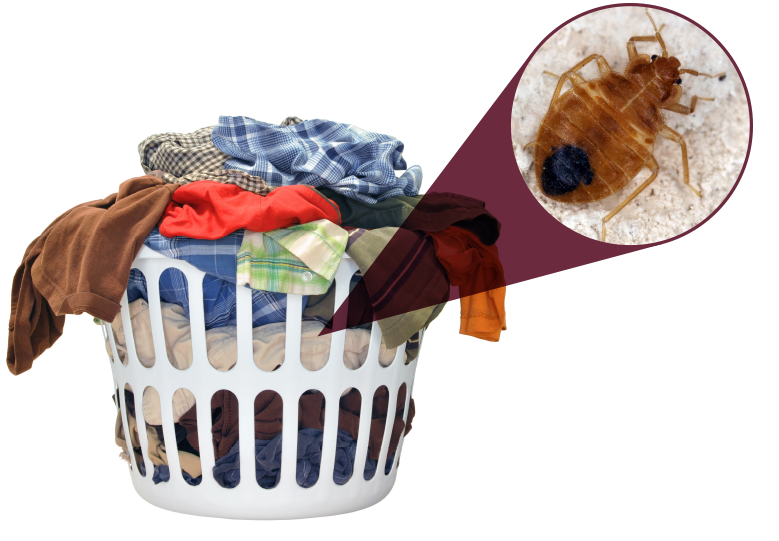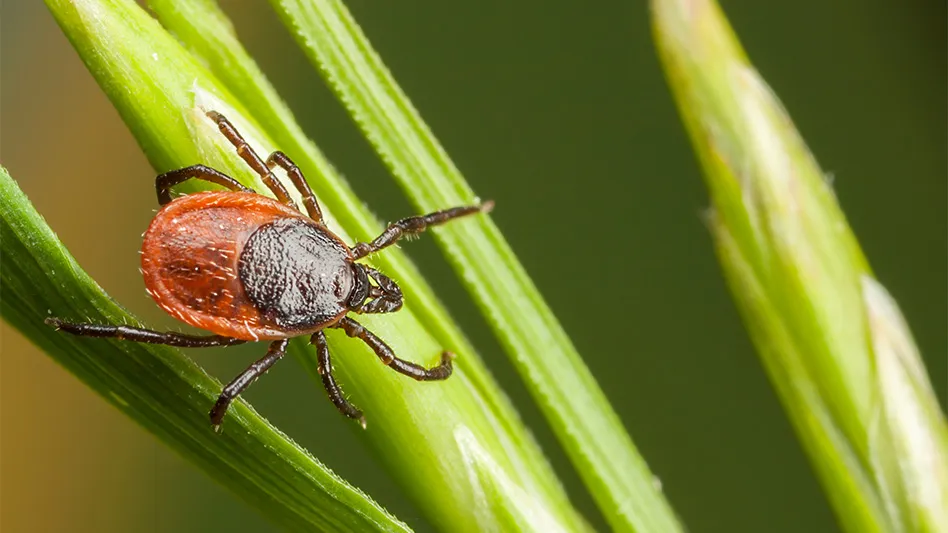
PMPs should check dirty clothes, where bed bugs sometimes like to aggregate.
Editor’s Note: This article was reprinted with permission from Techletter, a biweekly training letter for professional pest control technicians from Pinto & Associates. To subscribe, visit www.techletter.com.
Being blood-sucking insects, you wouldn’t expect bed bugs to be attracted to dirty clothes. But that’s exactly what researchers at the University of Sheffield in England discovered. Bed bugs are twice as likely to hide in soiled clothing that has been worn versus clean clothing.
In a laboratory “bedroom,” researchers offered newly fed bed bugs a choice of two clean tote bags, each stuffed with a clean T-shirt and socks, or two clean tote bags, each containing a T-shirt and socks that had been worn by a volunteer for three hours. Four days and several replications later, it was determined that in the absence of a human host, bed bugs were twice as likely to aggregate on the bags containing soiled clothes. The researchers concluded that “over a period of several days, bed bugs are attracted to, and remain on, soiled clothing.”
WHY? Bed bugs use a number of cues to find their human hosts, one is exhaled CO2, another is the scent of a sleeping person that is made up of many volatile compounds. Soiled clothes likely give off these same attraction compounds for some time after wearing. This study has important implications for travelers who store dirty clothes in their suitcases before the trip home. What does this mean for the PMP perfoming bed bug work? Our thoughts:
When inspecting for bed bugs, don’t ignore the pile of dirty clothes in the closet, in a corner or in a hamper. Wear gloves or use tongs to lift clothing and bag it. In our opinion, if dirty socks attract bed bugs, then shoes, especially athletic shoes, likely do as well. Shoes, as well as gym bags and duffle bags that contained sweaty clothing and shoes, also should be inspected.
When treating for bed bugs, ask the resident to bag and seal dirty clothes and washable shoes for washing and drying, and to keep these soiled items separate from unworn clothes that may also be washed as part of the treatment prep.
In certain accounts with bed bug problems such as shelters, nursing homes or dormitories, ask about their laundry procedures and offer suggestions for better storage and handling of clothing that is collected to be laundered in-house.
Regarding your own clothes, you now have one more reason to immediately launder or bag your work clothes at the end of the day, keeping them separate from your family’s laundry.
Source: William T. Hentley, B. Webster, S. Evison, M. Siva-Jothy. Bed bug aggregation on dirty laundry: a mechanism for passive dispersal. Scientific Reports 7:11668; Sept. 28, 2017.
The authors are well-known industry consultants and co-owners of Pinto & Associates.
Latest from Pest Control Technology
- Ground Control
- Scientists, PMPs Collaborating to Map Termite Distribution in Southern U.S.
- Viking Pest Control Organizes a Charity Bike Build for Local Families
- Gaining Control of Structure-Infesting Carpenter Ants
- Big Blue Bug’s Brian Goldman Receives Rhode Island Small Business Person of the Year Award
- UF Researchers Examine How Much Bait it Takes to Eliminate a Subterranean Termite Colony
- Women in Pest Control Group Continues to Grow, Provide Opportunities in the Industry
- NPMA Announces Results of 2024-2025 Board of Directors Election





